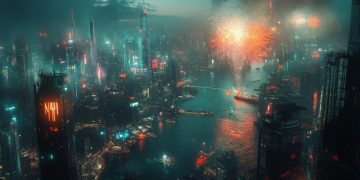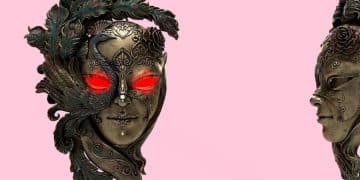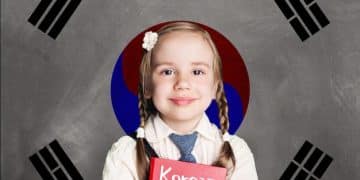The Most Anticipated Romantic Dramas of 2025: A Deep Dive
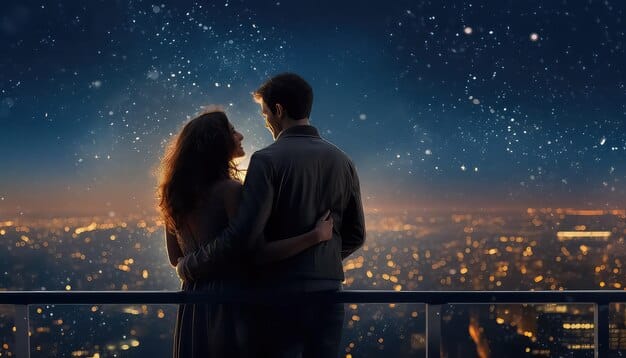
Anticipated romantic dramas of 2025 promise a refreshing blend of established genres and innovative storytelling, captivating audiences with emotionally rich narratives and compelling character arcs.
The landscape of film and television is ever-evolving, and 2025 is shaping up to be a pivotal year, especially for fans of romantic dramas. This genre, known for its ability to explore the complexities of human relationships and emotions, continues to captivate global audiences. From heart-rending sagas to uplifting tales of connection, the upcoming releases are poised to offer both escapism and profound reflection, pushing boundaries while honoring belovedtropes. This article is your comprehensive guide to what makes these narratives so compelling.
The enduring appeal of romantic dramas
Romantic dramas have a unique ability to resonate deeply with viewers, drawing them into richly woven tapestries of love, loss, and the intricate dance of human connection. Unlike pure romance, which often focuses solely on the journey to happily-ever-after, romantic dramas are unafraid to delve into the challenges, heartbreaks, and profound growth that define real-world relationships. This willingness to explore the full spectrum of emotions, from exhilarating joy to devastating sorrow, is precisely what gives the genre its enduring power and broad appeal.
Over the decades, audiences have consistently been drawn to stories that mirror their own experiences or offer a glimpse into idealized versions of love. Whether it’s the classic forbidden romance that defies societal norms or the story of two souls finding each other against all odds, these narratives tap into universal desires and fears. They provide a safe space to process complex emotions, offering catharsis and understanding. The genre’s ability to evolve with societal changes, reflecting contemporary relationship dynamics while retaining its core emotional sincerity, ensures its continued relevance.
Why we love stories about love and loss
Human beings are intrinsically wired for connection. We seek it in our own lives, and we find profound satisfaction in witnessing its portrayal on screen. Romantic dramas excel at this by presenting relationships that feel authentic, even when set in fantastical worlds. The stakes are often intensely personal, focusing on the emotional well-being and happiness of the characters, which makes the audience deeply invested in their journeys.
- Emotional catharsis: Viewers often find release in experiencing the high and low points of fictional relationships.
- Relatability: Themes of compromise, forgiveness, passion, and jealousy resonate with personal experiences.
- Escapism: These stories offer a magical departure from routine, transporting us to worlds where love conquers all, or at least tries to.
- Reflection: They prompt introspection about our own relationships and what we value in connection.
The beauty of romantic drama lies in its capacity to show us that love isn’t always easy, but it’s almost always worth fighting for. It teaches us about resilience, empathy, and the transformative power of human connection.
Key trends shaping 2025’s romantic dramas
As we look ahead to 2025, several exciting trends are emerging within the romantic drama genre, promising to redefine how these stories are told and consumed. One notable shift is the increasing emphasis on diversity and inclusion, moving beyond conventional narratives to represent a wider range of experiences, identities, and relationship dynamics. This commitment enriches the storytelling, offering fresh perspectives and allowing more viewers to see themselves reflected on screen. The stories are becoming more nuanced, reflecting the complexities of modern love in a globalized world.
Another significant trend is the blending of genres—romantic dramas are no longer strictly confined to their own category. We’re seeing more elements of psychological thrillers, sci-fi, historical epics, and even fantasy interwoven into romantic narratives. This hybridization creates more layered and unpredictable stories, challenging audience expectations and keeping the genre vibrant. These interwoven elements provide new dramatic tension and character development opportunities.
Diversity and representation in narratives
The push for authentic representation is not just a passing fad but a foundational shift. Audiences demand stories that reflect the rich tapestry of human experience. In 2025, this translates to romantic dramas featuring protagonists from various cultural backgrounds, LGBTQ+ relationships, and characters with disabilities. These narratives move beyond tokenism, weaving these identities into the core of the story, making them integral to the emotional arcs.
- Diverse casting: More leading roles for actors of color and underrepresented communities.
- Inclusive storylines: Exploring relationships outside traditional heteronormative frameworks.
- Cultural depth: Incorporating specific cultural traditions and nuances into romantic plots.
- Authenticity: Prioritizing genuine portrayals that avoid stereotypes.
This evolving landscape ensures that romantic dramas are becoming more relevant and accessible to a broader global audience.
The rise of genre-blending and complex plots
The days of straightforward romantic plots are largely behind us. Modern audiences crave complexity and originality. 2025’s romantic dramas are embracing this by incorporating elements from other genres, adding depth and unexpected twists to traditional love stories. A romance set against a backdrop of a thrilling mystery, or a historical drama with a strong speculative fiction undercurrent, allows for richer character development and higher stakes.
This blending also encourages innovative visual storytelling and sound design, breaking free from typical genre aesthetics. The result is often a more immersive and thought-provoking viewing experience, where the romance serves as a powerful emotional core amidst a larger, intricate narrative.
Anticipated romantic dramas of 2025: a sneak peek
As industry insiders buzz about upcoming releases, several titles are already generating considerable anticipation among fans of romantic dramas. While specific plot details for many 2025 projects are still under wraps, early casting announcements, director choices, and thematic hints offer exciting glimpses into what’s in store. We’re seeing a mix of established award-winning creators returning to the genre and fresh voices bringing innovative approaches to storytelling. The promise is a slate of films and series that will provoke thought, stir emotion, and provide much-needed escapism.
From sweeping period pieces to contemporary explorations of modern dating, the variety is impressive. These projects often involve significant production values, aiming to create visually stunning worlds that enhance the emotional depth of their narratives. Think of grand cinematic landscapes complementing tumultuous love affairs, or intimate character studies set against bustling urban backdrops. The strategic release dates, often coinciding with awards season, further highlight the high expectations for these dramas.
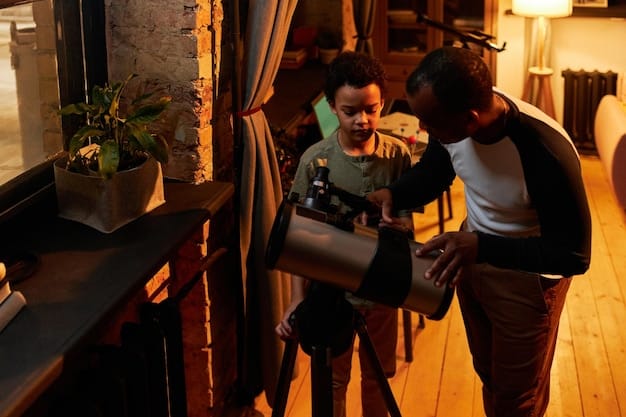
New narratives to look forward to
While many specifics are held tight, teasers suggest a focus on narratives that challenge traditional romantic tropes. Some projects hint at exploring second chances at love in later life, others delve into the complexities of cross-cultural relationships, and a few are reportedly tackling the emotional aftermath of significant societal events with a tender, human focus. These stories strive for an emotional authenticity that resonates deeply.
- “Echoes of Elysium”: A sci-fi romance exploring love across different dimensions, with a star-studded cast.
- “The Velvet Bloom”: A historical drama set against the backdrop of post-war Europe, focusing on healing and unexpected connection.
- “City of Whispers”: A contemporary urban tale about finding love and identity in a bustling metropolis.
The emphasis is on multi-dimensional characters and intricate emotional journeys, rather than simplistic love triangles. These new stories aim to reflect the multifaceted nature of love itself.
Returning directors and fresh talents
The creative teams behind these anticipated dramas include both seasoned veterans and innovative newcomers. Directors known for their nuanced storytelling are diving back into the genre, bringing their signature styles, while fresh talents are poised to make their mark with bold and unconventional approaches. This blend often guarantees a rich viewing experience, combining established mastery with groundbreaking vision.
Fresh directorial voices, often emerging from the independent film scene, are bringing a raw energy and an experimental edge to the genre, which can lead to surprisingly authentic and powerful storytelling. Their fresh perspectives might introduce new narrative techniques or explore previously untouched themes, ensuring that the romantic drama genre remains dynamic and relevant. Expect a spectrum of styles, from the deeply artistic to the broadly accessible.
The impact of streaming platforms on romantic dramas
The rise of streaming platforms has profoundly reshaped the landscape for romantic dramas, offering an unprecedented avenue for diverse stories to reach global audiences. Gone are the days when theatrical releases were the sole barometer of a film’s success; now, a compelling series or feature can find its niche on services like Netflix, Hulu, or Amazon Prime Video. This shift has democratized content creation and consumption, allowing for a broader spectrum of narratives that might not have found a home in traditional cinema. Streaming platforms are particularly adept at fostering binge-watching culture, which deepens viewer engagement with character arcs.
One primary impact is the increase in production volume. Streaming giants are constantly vying for subscriber attention, leading to a surge in original content, including a rich array of romantic dramas. This means more opportunities for filmmakers, writers, and actors, and, crucially, more choices for viewers. The episodic format, prevalent on streamers, also allows for more elongated and intricate character development, enabling deeper dives into the complexities of relationships over several hours, rather than being confined to a two-hour film.
Accessibility and global reach
Streaming platforms have obliterated geographical barriers, making romantic dramas from a multitude of cultures accessible worldwide. A series produced in South Korea or a film from France can instantly find a dedicated audience in the US, Europe, or beyond. This global reach not only broadens viewership but also encourages a cross-pollination of storytelling styles and cultural perspectives, enriching the genre as a whole.
- Broader viewership: Content is available to anyone with an internet connection, regardless of location.
- Cultural exchange: Introduction to diverse narratives and relationship dynamics from around the world.
- Niche content flourishing: Stories that might be too specific for mainstream cinemas find a dedicated audience.
- Subtitled and dubbed options: Breaking down language barriers for international appeal.
This accessibility fosters a more inclusive viewing experience, promoting understanding and appreciation for different forms of love stories.
The binge-watching phenomenon
The ability to watch an entire season of a romantic drama in one sitting has transformed how audiences engage with stories. Binge-watching allows for an immersive experience, deepening emotional investment in characters and plotlines. This format demands meticulously crafted narratives with compelling cliffhangers and satisfying emotional payoffs.
For creators, the binge model offers the freedom to build complex character arcs and slowly unfurl intricate plot developments, knowing that viewers can consume the story at their own pace without long waits between episodes. This also influences how romantic tension is built and released, often leading to more intense and immediate emotional connections for the audience. The immediate feedback through social media following a binge-watch weekend also shapes future content decisions.
Crafting compelling characters in modern romantic dramas
At the heart of every successful romantic drama are characters that resonate deeply with the audience. In 2025, the emphasis is increasingly on creating individuals who are multifaceted, flawed, and profoundly human. Gone are the days of one-dimensional archetypes; viewers now crave protagonists and antagonists who possess complex motivations, internal struggles, and palpable vulnerabilities. Crafting these compelling characters is an intricate art, requiring a deep understanding of psychology and narrative structure to ensure their journeys feel authentic and impactful within the romantic dramas context.
Modern romantic dramas often explore psychological depth through detailed backstories and intricate relational dynamics. Characters are not just defined by their romantic interests but by their careers, families, personal ambitions, and past traumas. This holistic approach ensures that when they fall in love, or confront heartbreak, these events carry significant weight because the audience understands the full scope of their lives. Writers are focusing on developing emotional intelligence in characters, allowing conflicts to arise from misunderstanding and growth, rather than simple plot devices.
The evolution of protagonists and antagonists
Protagonists in 2025’s romantic dramas are moving away from passive figures awaiting rescue, towards active agents of their own destiny. They are often career-driven, independent, and challenge societal norms, reflecting contemporary values. Their romantic journeys are intertwined with their personal growth and self-discovery.
- Flawed heroes: Characters with realistic imperfections make them more relatable and human.
- Strong female leads: Increasingly, women drive the narrative, initiating relationships and pursuing their desires.
- Complex supporting roles: Even minor characters contribute to the emotional depth of the story, not just as plot devices.
Antagonists, too, are evolving beyond purely evil figures. They often represent conflicting desires, societal pressures, or internal struggles, adding layers of nuance to the dramatic tension.
The importance of character arcs and emotional depth
A well-developed character arc is crucial for any compelling romantic drama. It shows how characters change and grow as a result of their experiences, particularly their romantic relationships. This evolution makes the story feel meaningful and provides a sense of emotional payoff for the audience.
Emotional depth is achieved by exploring characters’ inner lives, their fears, dreams, and vulnerabilities. This involves delicate writing that reveals motivations subtly, rather than stating them explicitly. When viewers connect with a character’s emotional journey, the triumphs feel sweeter and the heartbreaks more profound. This depth is what elevates a simple love story to a memorable human drama, allowing viewers to see reflections of their own lives and aspirations in the story.
The role of music and cinematography in romantic dramas
In the realm of romantic dramas, music and cinematography are not mere embellishments; they are fundamental storytelling tools that can elevate a scene from good to unforgettable. The judicious use of a soaring score or a haunting melody can amplify emotions, foreshadow events, and articulate feelings that words alone cannot convey. Similarly, cinematography, through its composition, lighting, and color palette, creates the visual language that guides the audience’s emotional response, setting the mood and reflecting the internal states of the characters. Without these elements, even the most compelling script can fall flat, lacking the sensory depth that defines the genre.
A carefully chosen musical theme can become synonymous with a particular relationship or emotional state, triggering powerful recollections long after the credits roll. It’s the unspoken language that underpins the narrative, bridging gaps in dialogue and adding layers of meaning. Cinematography, on the other hand, is the art of seeing. It frames the world of the characters, highlighting intimacy with close-ups, conveying isolation with wide shots, and setting the emotional temperature with specific color grading. Together, they form a symbiotic relationship, each enhancing the other to create a truly immersive and heartfelt experience for the viewer, ensuring that the emotional resonance endures.
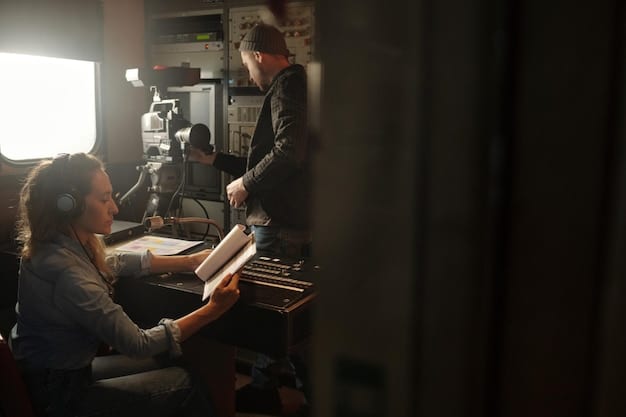
Soundtracks that tell a story
The soundtrack of a romantic drama often acts as another character, guiding the audience through the emotional landscape of the narrative. Original scores are meticulously crafted to underscore key moments, building tension or providing relief. Licensed songs, chosen for their lyrical relevance or evocative mood, can instantly place a scene in a specific time or emotional space, making the experience more relatable or nostalgic.
- Emotional resonance: Music enhances feelings of love, loss, joy, or sorrow, making them more visceral.
- Character themes: Specific melodies can become associated with characters, reflecting their inner world.
- Narrative progression: Music can subtly hint at plot developments or character conflicts.
- Memorable moments: Iconic songs linked to scenes become part of cultural consciousness.
A well-curated soundtrack can evoke powerful emotions and memories, making the drama linger in the viewer’s mind long after viewing.
Visual storytelling and aesthetic choices
Cinematography is the visual poetry of romantic drama. The way a scene is shot—from the choice of lens to the intricate dance of light and shadow—communicates volumes about the characters’ internal states and their relationships. A vibrant color palette might signify burgeoning love, while muted tones could convey despair or distance. Handheld cameras can bring an intimate, raw feel, while static, wide shots can create a sense of grandeur or isolation.
The aesthetic choices made by the cinematographer are crucial in establishing the tone and atmosphere of the drama. They work hand-in-hand with the director to construct a visual narrative that supports the emotional journey, immersing the audience completely. The use of natural light, the depth of field, and the framing of shots all contribute significantly to the overall impact, ensuring that every frame tells a part of the love story.
Future predictions for romantic dramas post-2025
Looking beyond 2025, the trajectory for romantic dramas appears to be one of continued innovation and deepening thematic complexity. The genre is unlikely to settle into predictable patterns, instead pushing the boundaries of storytelling, visual artistry, and emotional resonance. One significant prediction is the further integration of interactive elements, potentially allowing viewers to influence plot choices or character outcomes in novel ways. This could usher in a new era of personalized viewing experiences, making each narrative feel uniquely tailored to the individual. The lines between passive consumption and active participation may become increasingly blurred, inviting deeper engagement. Furthermore, issues of mental health will likely be addressed with greater frequency and nuance, reflecting societal conversations.
Another strong prediction involves the continued exploration of diverse relationship configurations, moving beyond traditional monogamous narratives to represent a wider array of consensual and ethical partnerships. This reflects a broader societal acknowledgment of different ways people connect and love. We can also anticipate that environmental themes and social justice issues will become more intrinsically woven into romantic plots, grounding these stories in real-world concerns and demonstrating how love can flourish or falter amidst larger global challenges. The future romantic drama will not only entertain but also subtly educate and provoke thought on contemporary issues.
Technological advancements and interactive narratives
The convergence of technology and storytelling presents thrilling possibilities for romantic dramas. Virtual reality (VR) and augmented reality (AR) could offer immersive narratives where viewers feel like they are truly part of the characters’ world, experiencing their emotions firsthand. Interactive storytelling, where audience choices influence the narrative path, could become more common, offering a unique and personalized experience.
- VR/AR immersion: Stepping into the emotional landscape of the characters.
- Choose-your-own-adventure plots: Viewers making decisions that shape the story’s outcome.
- AI-driven content: Personalizing stories based on viewer preferences and emotional responses.
These technological leaps promise to make romantic dramas not just watched, but deeply felt and experienced on a new, personal level.
Evolving themes and societal reflections
Post-2025, romantic dramas will undoubtedly continue to mirror and question evolving societal norms. We can expect to see more narratives that explore nuanced themes such as identity politics, sustainable relationships, and the impact of digital age on intimacy. Stories will delve deeper into the psychological intricacies of love, addressing mental health, trauma, and resilience with greater sensitivity.
The genre will provide a platform for discussions on global issues affecting human connection, from climate change and displacement to economic anxieties. Love stories will be set against these challenging backdrops, proving that human connection endures even in adversity. This evolution ensures that romantic dramas remain a powerful medium for both entertainment and social commentary, reflecting our collective hopes and anxieties about the future of human connection.
| Key Point | Brief Description |
|---|---|
| 💖 Enduring Appeal | Romantic dramas resonate deeply by exploring the full spectrum of human emotions in relationships. |
| 📈 Key Trends | Diversity, inclusion, and genre-blending are shaping 2025’s narratives. |
| 🌐 Streaming Impact | Platforms amplify global reach and encourage diverse content, impacting viewing habits. |
| 🔮 Future Outlook | Expect interactive elements, evolving themes, and deeper societal reflections. |
Frequently asked questions about romantic dramas
Romantic dramas explore the complexities, challenges, and emotional growth within relationships, often incorporating elements of conflict, loss, or personal struggle. Pure romance generally focuses on the development of a relationship towards a happy resolution, often with less emphasis on deep emotional turmoil or external obstacles.
Streaming platforms have increased accessibility, global reach, and the volume of diverse content. They enable more intricate character development through episodic formats and cater to binge-watching habits, deepening viewer engagement and allowing for a wider variety of stories to find an audience.
Key trends for 2025 include increased diversity and inclusion in casting and storylines, alongside genre-blending, where romantic plots are interwoven with elements of sci-fi, thrillers, or historical epics, creating more complex and layered narratives that challenge traditional formulas.
Compelling, multifaceted characters with deep emotional arcs allow audiences to truly invest in their journeys and struggles. Their flaws, strengths, and evolution make the relationships feel authentic and the emotional stakes resonate more profoundly with viewers, enhancing the overall storytelling experience.
Music and cinematography are vital tools for non-verbal storytelling in romantic dramas. A carefully crafted soundtrack amplifies emotions and defines key moments, while cinematography sets the mood and reflects characters’ internal states through visual composition, lighting, and color, creating a deeply immersive experience.
Conclusion
As we anticipate the arrival of 2025, it’s clear that the romantic drama genre is not just surviving but thriving, adapting to new platforms and evolving audience expectations. The blend of classic storytelling with contemporary themes, along with a renewed focus on diversity and intricate character development, promises a compelling slate of films and series. Both seasoned creators and fresh voices are contributing to a dynamic landscape where love stories are told with greater depth, realism, and emotional nuance than ever before. This continuous evolution confirms the timeless power of romantic dramas to explore the enduring complexities of human connection, ensuring their place as a beloved and impactful genre for years to come.
